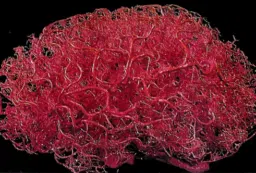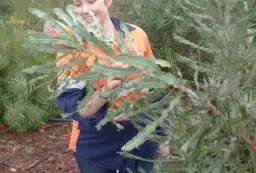Queensland Fresh Scientist ‘Judge’s Award’ winner discovers a compound that kills sleeping sickness parasites
For immediate release, Wednesday 31 August 2016

Dr Amy Jones from the Eskitis Institute for Drug Discovery at Griffith University says she made the discovery while testing a library of 25,000 possible compounds.
“This discovery has the potential to help some of the world’s poorest people,” she says. “It is a devastating and fatal disease that particularly affects young working men in the 36 countries of Sub-Saharan Africa.”
Human African trypanosomiasis (or HAT for short) is transmitted by small tsetse flies common in forests and near rivers where young men hunt or fish.
When the tiny parasites reach the brain they disrupt the normal sleeping cycle so that people fall asleep during the day and stay wide-awake at night.
“Every year there are about 5,000 reported cases,” says Amy. “However, this number is likely to be a big under-estimation as there is a stigma attached to catching the disease.
“People can have manic episodes and mood swings, which many cultures shun.”
To make matters worse, current drug treatments result in a large number of side effects and can mean having painful injections twice a day for up to two weeks.
“There are often no facilities or staff available in the remote places where these people live to administer such drugs,” says Amy. “And many people are too scared to get treated.”
Amy plans to modify the compound so that it can hopefully be developed into a drug, which could be administered orally as a tablet that patients take once a day for five to six days.
Queensland Chief Scientist Dr Geoff Garrett says scientific discoveries were happening in our backyard every day.
“It is terrific to think that researchers in Queenslanders have the potential to improve lives, even thousands of kilometres away, in the remotest areas of the globe,” Dr Garrett said.
Amy is one of ten 2016 Queensland Fresh Science finalists and her one minute explanation of her research won the “Judge’s Award” at a public event in Brisbane recently.
Fresh Science is a national competition helping early-career researchers find, and then share, their stories of discovery. The program takes up-and-coming researchers with no media experience and turns them into spokespeople for science, giving them a taste of life in the limelight, with a day of media training and a public event in their home state.
Queensland Fresh Science is supported by: Queensland Government; Queensland University of Technology (QUT); University of the Sunshine Coast (USC); The University of Queensland; and Econnect Communication.
See a short video explaining Amy’s work.
We can provide photos and broadcast quality footage of Amy at work.
For media, video and photography assistance:
Jenni Metcalfe, jenni@econnect.com.au; phone: 0408 551 866
For interview:
Dr Amy Jones, a.jones@griffith.edu.au; phone: 0479 040 339






 Fresh Science is on hold for 2022. We will be back in 2023.
Fresh Science is on hold for 2022. We will be back in 2023.